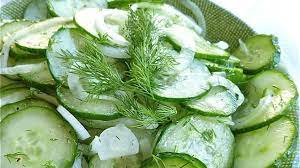10 Herbs You Can Grow Indoors In Jars of WATER All Year Round
-
Peppermint
This mint is used for medical use due to the large amount of volatile substance menthol contained in it. Menthol has the property of giving a unique feeling of cooling on the skin or tongue, without making real temperature changes. To grow peppermint in the water you just need to put fresh cuttings in the water and that would be all.
-
Spearmint
Find a left-over piece of spearmint from a bunch you have in a garden, bought from the markets, or a grocery store. Cut a stem of mint around 15cm in length and gently pull off about one-third to half of the leaves. Place the stem in a clean glass of water out of direct sunlight. Watch it grow!
-
Oregano
It is best to grow this type of herb indoors because you can flavor the leaves of almost any vegetable. Put a cut of fresh growth in water and when it starts to grow well start tearing the tops.
-
Basil
Basil will grow best in the warmth of your kitchen in a pot filled with water and the presence of good light. Use cuttings before they start to bloom. It is desirable to use several varieties of basil and your collection during the winter will be outstanding.
-
Sage
Soft sage cuttings in the spring can be put in water and they will take root quickly. You only need one or two sage plants because large amounts are not needed to give it flavor. They require strong light and should be placed in a well-ventilated place because this plant is prone to mold.
-
Stevia
Use this sweet plant as an addition to freshly prepared teas and drinks instead of sugar. Take a cutting of soft branches of stevia and put them in water and place them in a warm place and as much light as possible.
-
Lemon Balm
This plant from the mint family has the scent of lemon and is very useful for treats in every home, especially in winter. The leaves are used to make tea.
Cuttings are best put in the water in the spring or fall and store them in a warm place that receives plenty of strong indirect light. The root develops within 3-4 weeks, and the whole time the water should be kept clean with regular changes. Lemon balm is prone to mold, so when the weather is warmer you can keep it outside to prevent it.
-
Tarragon
The best time to take cuttings is in the spring after new growth appears, but the fall cuttings are fine too when you need to wait longer for growing roots.
Place cuttings in a bright light area and provide them with warmth. Opt for French tarragon, which is best as a culinary herb. You can use the Russian tarragon as a green in salads.
-
Thyme
New growth cuttings with green color are best for growing and you can provide them in mid-spring to early summer before the plant starts to bloom.
If thyme stalks are thin, they can dry out very quickly, so put them in water as soon as you cut them. Occasionally spray the part above the water, and when it starts to grow, cut off the stems to promote branching.
-
Rosemary
Since rosemary cuttings are semi-woody, they need more time to take root, but spring cuttings are best for growing because they can grow faster. Keep it in a sunny place in your kitchen.
How to Feed Water-Grown Plants?
Growing plants in plain water will cause a deficiency of mineral nutrients, so they would probably need supplemental nutrition to do well. For this purpose, regular fertilizers diluted in water or proprietary preparations intended for hydroponics are used.
Types of Hydroponic Systems
The Wick system – is similar to growing plants in the soil, except that nutrients come from water, not soil.
Deep Water Culture – Here the roots remain suspended in water, but the plants actually grow in a second tank that is partially immersed in the primary water tank.
Falling water – nutrients are obtained from the upper sprinklers and penetrate by gravity and get recirculation. Good air circulation is provided around the roots, but the system includes pumping water for recirculation.
Benefits of Growing Your Own Herbs
Growing herbs at home is an easy and fun way to ensure you have just what you need for your kitchen. By doing it people can benefit in the following things:
1) Redefine fresh
Every chef strives to get the freshest products he needs to prepare his favorite dishes, but this is sometimes really achieved in markets and local shops. And no matter how feasible it is to buy fresh produce, what’s on the shelves will never be as good as if you grow it yourself.
When you grow herbs at home, you cut them when you really need them, so you don’t have to deal with storing them so they don’t dry out or spoil. Plus, visiting a pot on your window sill is a lot more practical than running to the store.
-
Different taste
In some cases, using dried herbs such as oregano or rosemary can pull the situation out without losing too much flavor. it is often a cheaper and more convenient alternative to fresh. However, using fresh herbs is almost always a tastier option.
-
Save money
Having all the spices in a drawer is a really expensive option. That is why growing herbs at home will reduce the price of essential ingredients.
The added bonus of growing herbs at home lets you know all about them, so you don’t have to worry about someone using a harmful pesticide on your plants or exposing them to contaminants.
-
Add variety to your dishes
When you have more fresh herbs at home, it gives you the opportunity to experiment with different flavor combinations. But you can also experiment with growing different plants, which you have rarely used in the past, but can be a challenge for the future.
-
Bring color to your home
In addition to giving you the opportunity to enrich the taste of your dish, fresh herbs will look good in your home. In addition to being easy to grow, their care will become your pleasant daily activity.
This is of paramount importance to students attending a culinary academy, as it thus develops a strong understanding of how to use herbs in their cooking.




